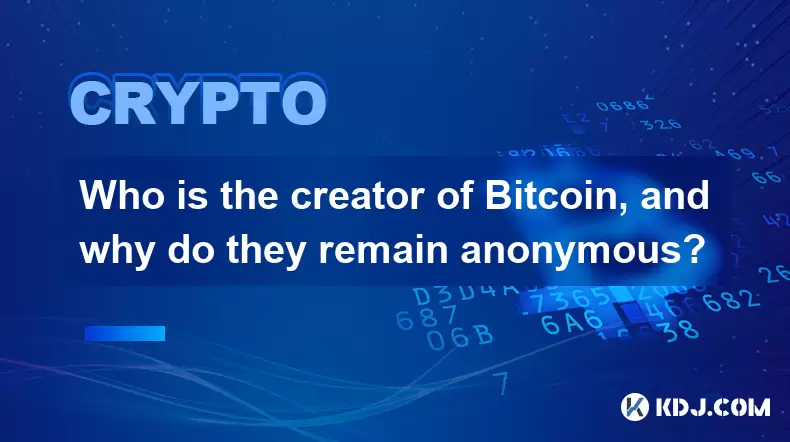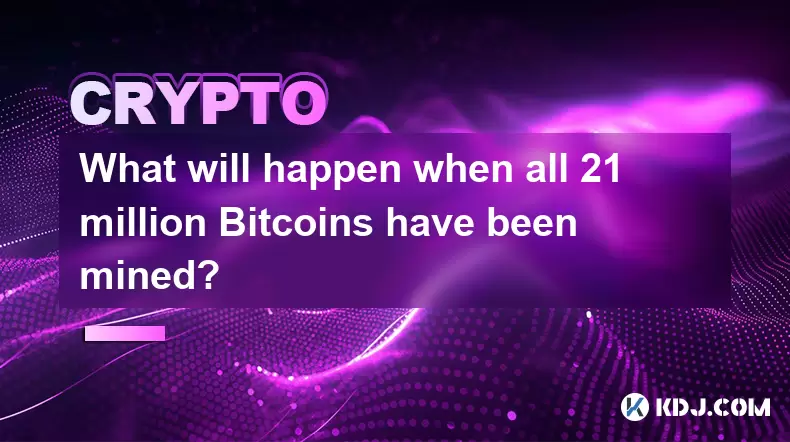-
 Bitcoin
Bitcoin $113900
0.47% -
 Ethereum
Ethereum $3491
-0.42% -
 XRP
XRP $2.876
-1.87% -
 Tether USDt
Tether USDt $1.000
0.03% -
 BNB
BNB $750.4
-0.49% -
 Solana
Solana $161.3
-1.76% -
 USDC
USDC $0.9999
0.01% -
 TRON
TRON $0.3242
-0.91% -
 Dogecoin
Dogecoin $0.1985
-0.19% -
 Cardano
Cardano $0.7241
1.49% -
 Hyperliquid
Hyperliquid $38.05
0.56% -
 Stellar
Stellar $0.3896
2.92% -
 Sui
Sui $3.442
0.61% -
 Chainlink
Chainlink $16.18
0.92% -
 Bitcoin Cash
Bitcoin Cash $541.0
0.51% -
 Hedera
Hedera $0.2427
2.67% -
 Ethena USDe
Ethena USDe $1.001
0.03% -
 Avalanche
Avalanche $21.39
-0.68% -
 Toncoin
Toncoin $3.669
2.25% -
 Litecoin
Litecoin $109.5
0.95% -
 UNUS SED LEO
UNUS SED LEO $8.966
0.11% -
 Shiba Inu
Shiba Inu $0.00001218
0.77% -
 Polkadot
Polkadot $3.598
1.23% -
 Uniswap
Uniswap $9.164
1.14% -
 Monero
Monero $297.7
1.21% -
 Dai
Dai $1.000
0.00% -
 Bitget Token
Bitget Token $4.328
0.84% -
 Pepe
Pepe $0.00001047
1.05% -
 Cronos
Cronos $0.1329
0.70% -
 Aave
Aave $257.6
1.03%
Who is the creator of Bitcoin, and why do they remain anonymous?
The true identity of Bitcoin’s creator, Satoshi Nakamoto, remains unknown, but their pseudonymous design reinforced decentralization, privacy, and trust in the network’s autonomy.
Aug 03, 2025 at 08:01 pm

Who is the Creator of Bitcoin?
The creator of Bitcoin is known by the pseudonym Satoshi Nakamoto. This name was used in the original 2008 whitepaper titled “Bitcoin: A Peer-to-Peer Electronic Cash System”, which introduced the concept of a decentralized digital currency. The document outlined how a blockchain-based system could enable secure, trustless transactions without relying on central authorities such as banks or governments. Despite extensive research and speculation, the true identity behind the name Satoshi Nakamoto has never been definitively confirmed. Over the years, several individuals have been speculated to be the real person or group, including computer scientists like Nick Szabo, Hal Finney, and Craig Wright. However, none of these claims have been universally accepted or proven beyond doubt.
Technical Contributions and Early Development
Satoshi Nakamoto was deeply involved in the early development of the Bitcoin network. They wrote the original Bitcoin software, launched the first blockchain in January 2009 by mining the genesis block, and actively communicated with other developers through online forums and email. The genesis block contained a hidden message referencing a headline from The Times: “Chancellor on brink of second bailout for banks,” which many interpret as a statement on the flaws of the traditional financial system. During this period, Nakamoto contributed to debugging, optimizing code, and discussing the future direction of the project. Their technical expertise in cryptography, distributed systems, and peer-to-peer networking was evident in the robustness of the initial implementation.
Why Did Satoshi Nakamoto Remain Anonymous?
One of the most discussed aspects of Bitcoin’s origin is the decision to remain anonymous. The choice to operate under a pseudonym may have been motivated by several factors. A primary reason could be ideological alignment with the principles of decentralization and anti-authoritarianism. By not attaching a public identity to Bitcoin, Nakamoto ensured that the focus remained on the technology rather than on a central figure. This reinforced the idea that Bitcoin was not controlled by any individual, making it more resistant to censorship or manipulation. In a decentralized system, the absence of a visible leader strengthens trust in the protocol’s autonomy.
Privacy and Security Considerations
Another plausible reason for anonymity is personal safety and privacy. If Nakamoto were to reveal their identity, they would instantly become one of the wealthiest individuals in the world, given the large number of bitcoins mined in the early days—estimated at over 1 million BTC. Such wealth could attract threats, including hacking attempts, legal scrutiny, or even physical danger. Remaining anonymous protects against these risks. Additionally, governments might attempt to exert control over the creator, potentially compelling them to alter the protocol or surrender private keys. By staying hidden, Nakamoto avoids becoming a target for regulatory pressure or coercion, preserving the integrity of the network.
Impact of Anonymity on the Cryptocurrency Ecosystem
The anonymity of Bitcoin’s creator has had a profound influence on the broader cryptocurrency space. It set a precedent for projects that value privacy and decentralization, inspiring other pseudonymous developers like Vitalik Buterin (who later revealed his identity) and the creators of privacy-focused coins such as Monero or Zcash. The mystery surrounding Nakamoto has also contributed to Bitcoin’s mythos, enhancing its appeal as a grassroots, anti-establishment movement. The fact that the founder disappeared from public view in 2011—transferring control of the codebase to other developers—demonstrates a commitment to the idea that no single person should govern the network. This transition was seamless, proving the resilience of decentralized governance.
How to Verify Satoshi’s Communications?
During the active development phase, Satoshi Nakamoto communicated through the BitcoinTalk forum and email exchanges. These messages are preserved and can be reviewed by the public. One way to authenticate past communications is through cryptographic signatures. Nakamoto signed certain messages with a private key linked to the earliest Bitcoin addresses. For example, blocks in the initial chain were mined using software bearing Nakamoto’s digital fingerprint. Though no new messages have been verified since 2011, researchers can still analyze code commits, forum posts, and email headers to trace patterns consistent with the original developer’s behavior. Any claim of being Satoshi must be validated against these cryptographic proofs, not just circumstantial evidence.
Frequently Asked Questions
Can someone else claim to be Satoshi Nakamoto and gain control of Bitcoin?
No. Even if someone claims to be Satoshi, they cannot alter the Bitcoin protocol without consensus from the network’s miners, developers, and users. Control over Bitcoin is distributed, not centralized. Without access to Nakamoto’s private keys—assuming they still exist—no one can spend the early bitcoins, but that does not grant governance power.
Has Satoshi Nakamoto’s Bitcoin ever been moved?
As of now, the bitcoins mined in the earliest blocks, believed to belong to Satoshi Nakamoto, have never been spent. These coins remain dormant, which some interpret as evidence that Nakamoto is either deceased, inactive, or intentionally preserving the network’s stability by not influencing the market.
Could Satoshi reveal their identity through a signed message?
Yes. If someone produces a message signed with a private key known to belong to Nakamoto—such as one used to sign old forum posts or code commits—it would be widely accepted as proof. The signature must match the public keys associated with verified historical activity.
Does the anonymity of Bitcoin’s creator pose a risk to its legitimacy?
Not necessarily. The transparency of the blockchain and open-source code means that Bitcoin’s functionality can be independently verified. The creator’s identity is less important than the system’s security and consensus mechanism. The network operates based on rules encoded in software, not on the reputation of any individual.
Disclaimer:info@kdj.com
The information provided is not trading advice. kdj.com does not assume any responsibility for any investments made based on the information provided in this article. Cryptocurrencies are highly volatile and it is highly recommended that you invest with caution after thorough research!
If you believe that the content used on this website infringes your copyright, please contact us immediately (info@kdj.com) and we will delete it promptly.
- Altcoins Most Searched: Hedera (HBAR) and the ETF Hype
- 2025-08-03 20:50:16
- Arbitrage Adventures: Creditcoin, Kaspa, and Chasing Crypto Profits
- 2025-08-03 20:30:16
- Claude HIVE & Code Agents: Faster Coding Revolution?
- 2025-08-03 20:50:16
- Trump Media, Bitcoin, and Crypto: A Surprising Alliance in the Making?
- 2025-08-03 21:30:16
- Shiba Inu's Bullish Reversal Hopes Amid Market Uncertainty: A Deep Dive
- 2025-08-03 21:30:16
- Shiba Inu's Struggle, Mutuum Finance's Rise, and Key Support Levels: A Crypto Deep Dive
- 2025-08-03 20:55:16
Related knowledge

What is the difference between holding Bitcoin on an exchange versus in a personal wallet?
Aug 02,2025 at 03:15pm
Understanding Custodial vs Non-Custodial ControlWhen holding Bitcoin on an exchange, users are essentially entrusting their assets to a third party. E...

What is a 51% attack, and could it destroy Bitcoin?
Aug 03,2025 at 05:08pm
Understanding the Concept of a 51% AttackA 51% attack refers to a scenario in which a single entity or group gains control of more than half of a bloc...

What are the biggest security risks associated with holding Bitcoin?
Aug 03,2025 at 03:16pm
Exposure to Private Key CompromiseOne of the most critical security risks when holding Bitcoin is the compromise of private keys. These cryptographic ...

Can governments shut down or ban Bitcoin?
Aug 02,2025 at 09:44am
Understanding Bitcoin’s Decentralized StructureBitcoin operates on a decentralized peer-to-peer network, meaning it is not controlled by any single en...

What will happen when all 21 million Bitcoins have been mined?
Aug 03,2025 at 09:50am
Understanding the 21 Million Bitcoin CapThe 21 million Bitcoin cap is a foundational rule embedded in Bitcoin’s source code, designed by Satoshi Nakam...

What are Bitcoin transaction fees, and why do they fluctuate?
Aug 03,2025 at 01:51am
Understanding Bitcoin Transaction FeesBitcoin transaction fees are small amounts of Bitcoin paid by users to miners for processing and confirming tran...

What is the difference between holding Bitcoin on an exchange versus in a personal wallet?
Aug 02,2025 at 03:15pm
Understanding Custodial vs Non-Custodial ControlWhen holding Bitcoin on an exchange, users are essentially entrusting their assets to a third party. E...

What is a 51% attack, and could it destroy Bitcoin?
Aug 03,2025 at 05:08pm
Understanding the Concept of a 51% AttackA 51% attack refers to a scenario in which a single entity or group gains control of more than half of a bloc...

What are the biggest security risks associated with holding Bitcoin?
Aug 03,2025 at 03:16pm
Exposure to Private Key CompromiseOne of the most critical security risks when holding Bitcoin is the compromise of private keys. These cryptographic ...

Can governments shut down or ban Bitcoin?
Aug 02,2025 at 09:44am
Understanding Bitcoin’s Decentralized StructureBitcoin operates on a decentralized peer-to-peer network, meaning it is not controlled by any single en...

What will happen when all 21 million Bitcoins have been mined?
Aug 03,2025 at 09:50am
Understanding the 21 Million Bitcoin CapThe 21 million Bitcoin cap is a foundational rule embedded in Bitcoin’s source code, designed by Satoshi Nakam...

What are Bitcoin transaction fees, and why do they fluctuate?
Aug 03,2025 at 01:51am
Understanding Bitcoin Transaction FeesBitcoin transaction fees are small amounts of Bitcoin paid by users to miners for processing and confirming tran...
See all articles

























































































